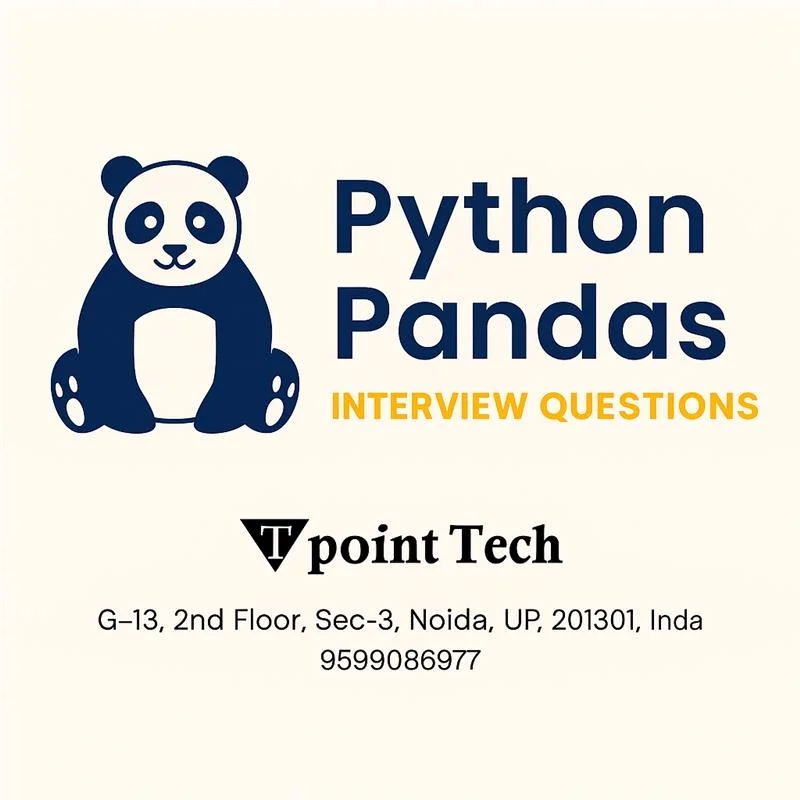If you're preparing for a data-related interview in 2025, mastering Pandas is essential. As one of the most powerful and popular data manipulation libraries in Python, Pandas is commonly used in data analysis, data science, machine learning, and automation. Recruiters frequently test candidates on Pandas concepts, functions, and real-world use cases to evaluate their practical data-handling skills.
This blog — “Pandas Interview Snapshot: Top Q&A for 2025” — is designed to provide a concise yet effective way to review the most frequently asked Pandas interview questions. Whether you're a fresher starting out in data analytics or an experienced Python developer, these curated questions and answers will help you feel confident walking into any technical round.
Why Pandas Is a Key Interview Topic
Pandas is a high-level data manipulation tool built on the NumPy package. It offers two main data structures — Series and DataFrame — which simplify handling structured data. Pandas is central to cleaning, transforming, and analyzing datasets, making it a core skill for:
-
Data analysts
-
Data scientists
-
Machine learning engineers
-
Backend Python developers
-
BI professionals
That’s why interviewers expect you to understand how to use Pandas for real-world data manipulation tasks — not just theory, but practical application.
Most Common Pandas Interview Questions and Answers
Let’s look at some of the top questions typically asked in interviews, with brief answers to guide your preparation:
1. What is Pandas in Python?
Answer:
Pandas is an open-source Python library that provides high-performance, easy-to-use data structures and data analysis tools. It is particularly useful for handling structured data using DataFrames and Series.
2. Explain the difference between a Series and a DataFrame.
Answer:
-
A Series is a one-dimensional labeled array.
-
A DataFrame is a two-dimensional labeled data structure with columns of potentially different types.
3. How do you handle missing data in Pandas?
Answer:
Pandas provides several methods to handle missing data:
-
isnull()andnotnull()to detect missing values. -
fillna()to replace missing values. -
dropna()to remove missing values. -
interpolate()to fill missing values with interpolated data.
4. What are the different ways to select data in a DataFrame?
Answer:
You can select data using:
-
df['column_name']– single column -
df[['col1', 'col2']]– multiple columns -
df.loc[]– label-based selection -
df.iloc[]– position-based selection -
Boolean indexing, slicing, and conditions
5. How do you merge or join DataFrames in Pandas?
Answer:
You can use:
-
pd.merge()– similar to SQL joins (inner, outer, left, right) -
pd.concat()– combines along a particular axis -
df.join()– for joining on indexes or keys
6. Explain the GroupBy function in Pandas.
Answer:groupby() is used to split data into groups based on some criteria, apply a function, and combine the results. It’s useful for aggregation and transformations.
df.groupby('category')['sales'].sum() 7. How do you sort a DataFrame by values?
Answer:
Use df.sort_values(by='column_name', ascending=True/False) to sort by a specific column.
8. What’s the difference between apply(), map(), and applymap()?
-
map()– works on Series -
apply()– used on Series or DataFrame (row/column-wise) -
applymap()– applies a function to each element of a DataFrame
9. How can you read and write CSV files using Pandas?
df = pd.read_csv('file.csv') df.to_csv('output.csv', index=False) 10. What are some performance optimization tips in Pandas?
-
Use vectorized operations instead of loops
-
Optimize data types (e.g.,
category,float32) -
Avoid chained indexing
-
Use
query()andeval()for speed -
Filter rows/columns before applying transformations
Final Tips for Interview Success
-
Practice with real datasets — Use Kaggle or sample CSVs.
-
Understand the why — Don’t just memorize; understand what problem each function solves.
-
Learn to debug — Interviews may involve identifying and correcting faulty code.
-
Work on projects — Use Pandas in at least one real-world data project.
-
Stay updated — New Pandas features are added regularly; stay current with the docs.
Conclusion
“Pandas Interview Snapshot: Top Q&A for 2025” helps you cut through the noise and focus on what matters most in Pandas interviews. Whether you're preparing for an internship, a full-time role, or even a freelance data gig, these carefully selected questions offer a fast and effective way to revise the essentials.
Make sure to practice the examples on your own machine. Use Jupyter Notebook or Google Colab to experiment and gain hands-on confidence.





